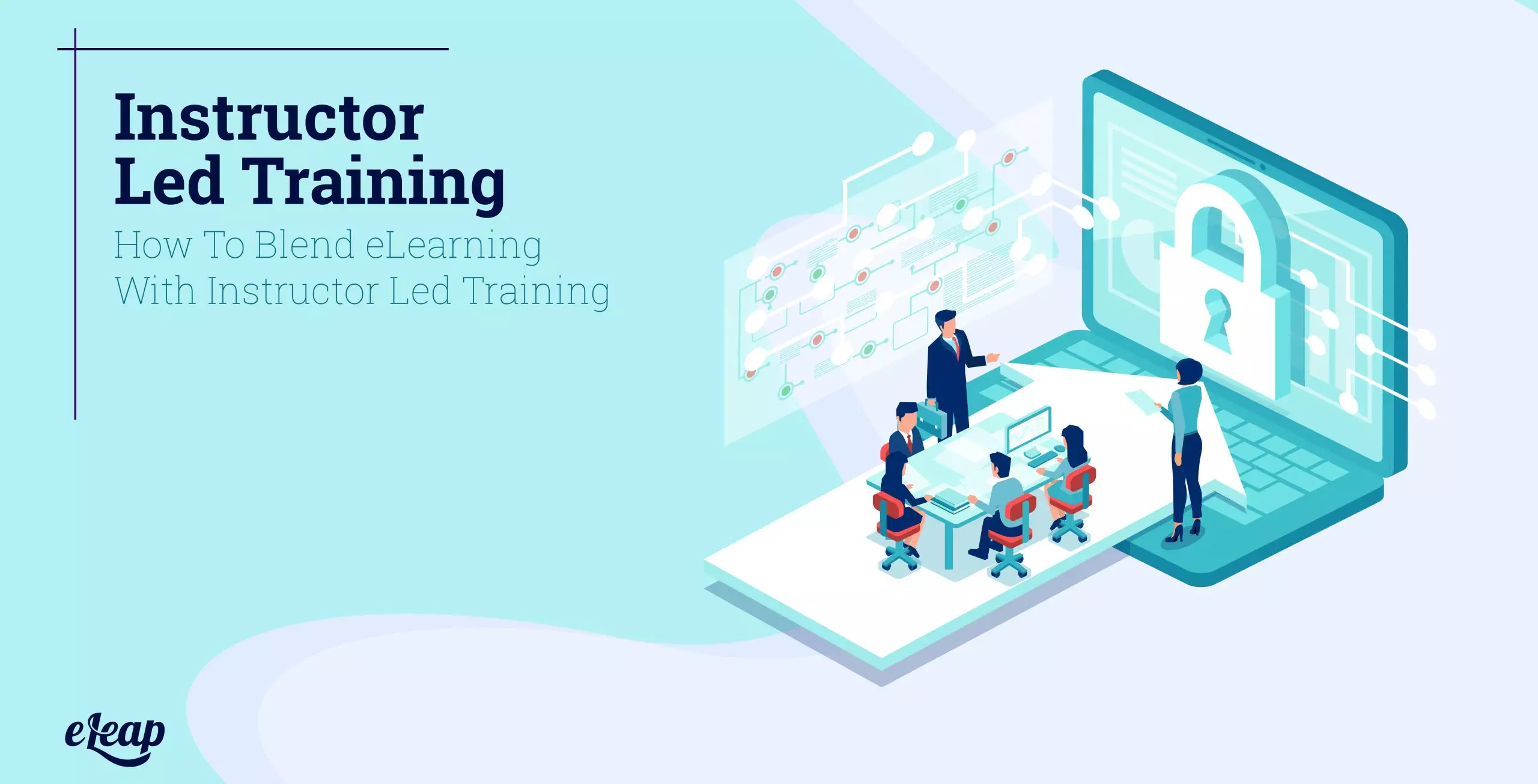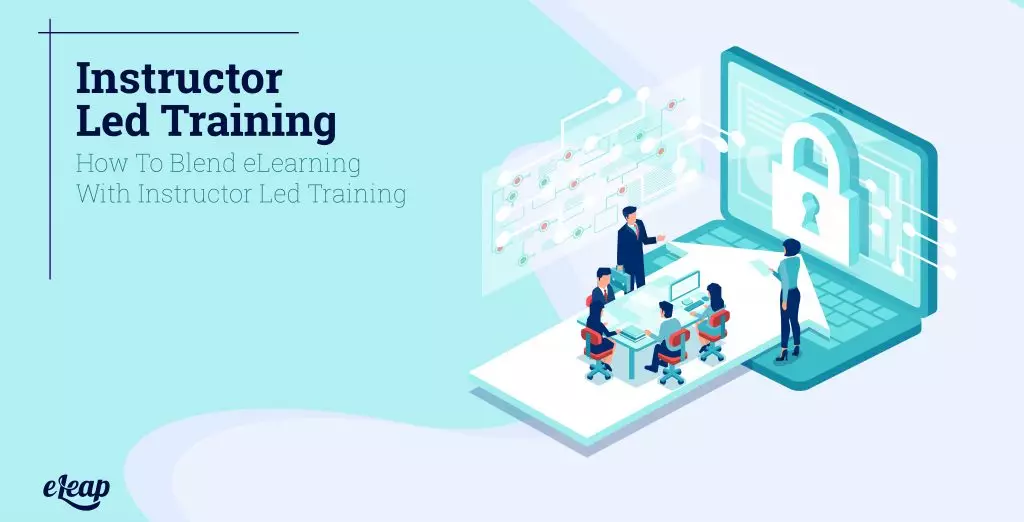Instructor-Led Training
How To Blend eLearning With Instructor Led Training

Classroom-based training or instructor-led training is the traditional form of corporate learning, but as web-based programs skyrocket in popularity, it seems to many that these classrooms are losing their value and online learning is the only option. Does that mean in-person learning offers no value? Is digital training the only solution moving forward?

The truth lies somewhere in the middle.
Some programs, especially courses with significant hands-on training requirements, aren’t as effective when delivered in an online, impersonal atmosphere. For example, think about nurse training. It requires theory work, but also in-person learning. Instructor-led training creates a support system of learning between the student and instructor, as well as between peers.
It seems like a catch-22 situation, but there is a solution. What is the answer to this duality of learning systems? Blended learning.
Blended learning combines online and classroom training to ensure that students receive the necessary skills and behaviors in a variety of forms. Learners can move forward in ways that are most conducive to the learners and the skills being learned.
But blended learning doesn’t solely mean web-based, multimedia content. It means pairing online courses with instructor-led training. How can you fuse the two in a way that allows these platforms to correlate and build on one another?
E-Tracking Instructor-Led Training
Use your online Learning Management System to track and analyze your instructor-led training in the classroom. E-tracking in-person training allows you to maintain consistency between the two platforms and to continuously and reliably analyze the effectiveness of training.
What are some key features for your instructor-led training tracking system?
- Requirements: Create group or user pathways that detail into which courses (both online and in-person) a given individual or department must enroll. Users can check these off as they are completed to track achievement, build courses upon one another, and to analyze learnings.
- Events Calendar: Include events with a description of the course, location, number of available seats, and start and end times. This allows students to pick required courses based on their schedules by easily self-enrolling directly on the eLearning platform.
- Status Management: Track event attendance and include notifications for instructors and students. This also enables specific course assignments to be automatically released at a particular set time; teachers don’t have to worry about emailing or forgetting to hand out an assignment at a given time. This also rewards attendees for completing the training.
- Reporting: The scheduled events generate completion reports that instructors and others can view. This enables tracking of each individual’s learning, attendance, assignments, and success. These can often be downloaded into Excel for use in other areas, as well.
The Role of Collaborative Learning
While you might immediately think of classroom-based courses when it comes to instructor-led training, that’s not the only way this type of learning can be deployed. With more robust connectivity, collaborative learning can now take place.
What’s collaborative learning? It’s really nothing more than allowing your learners to support one another. They can do so in many different ways, some of which follow the instructor-led training model, just in a digital format. Some options include:
- Webinars: Webinars are to online learning what seminars are to physical, instructor-led learning. They provide a digital space for your learners to come together, follow along with an instructor, ask questions and get answers, and more. They combine the benefits of classroom-learning with the advantages of distance learning, ensuring that learners can participate from anywhere around the world.
- User Forums: Don’t underestimate the ability of employees to be instructors in their own right. Everyone has expertise or knowledge that can benefit someone else, and by creating user forums within your LMS, you provide your team members the chance to share their knowledge directly with others.
- Mentorships: Mentoring has been part and parcel of training for centuries, and the advent of online training hasn’t eliminated it. In fact, digital technology can breathe new life into mentorships, allowing employees to engage in instructor-led training in a one-on-one environment that is completely personalized to their unique needs and professional goals.
Assessing Classroom and Online Training
Tracking your classroom-based training online generates convenience and usability for all parties. Beyond that, it also enables instructors to assess the effectiveness of training programs. They can see which students did well in which courses, and how these programs were able to build on one another.
It creates a single user face for each learner that tracks future behaviors and gained skills to determine how effective these online and instructor-led training were. However, to assess success here, you need to know where everyone is going. Without an understanding of the end goal, it’s impossible to evaluate progress.
In a nutshell, this requires that you can create learning paths. Essentially, these are collections of courses and modules that take a learner from point A to point Z in a cohesive, planned manner. Learning paths work well for groups, but you can use them in a granular way to manage individual development and learning, too.
To use learning paths, you need to start from the end and work backward. Begin planning with the ultimate goal of the training, whether that’s mandatory corporate training or professional development, and then build in courses that help employees learn the skills and knowledge necessary to reach that point.
Creating a Cohesive, Supportive Learning Environment
Don’t neglect the support network and value of the classroom, but don’t ignore the benefits of eLearning courses, either. Together, the two can unite and support students with all types of learning needs. If you use an online LMS to track instructor-led training, you’ll be able to create a consistent and highly-productive learning program for your students.
A blended learning approach, coupled with digital options like mentorships, the use of webinars, and user forums, can help support learning at every level of your organization.